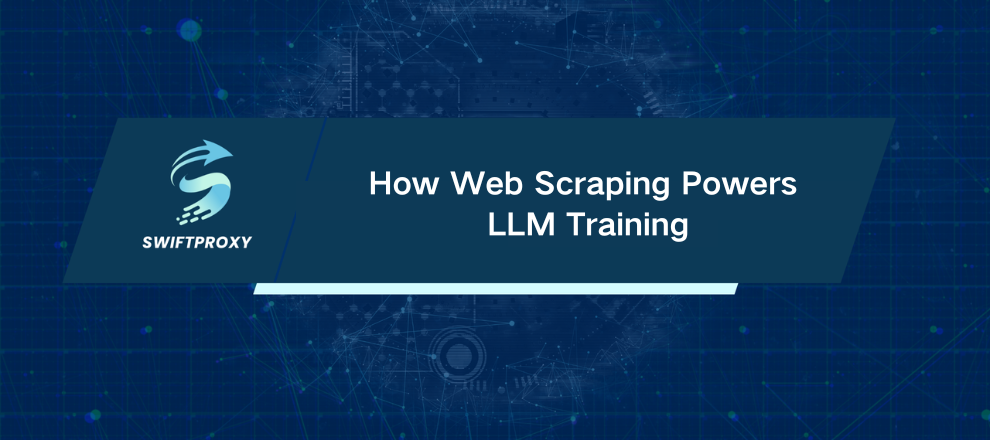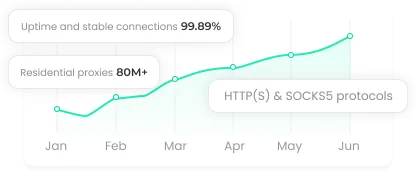How Web Scraping Powers LLM Training
Imagine teaching a machine to understand not just words, but context, intent, and nuance—at a scale humans could never match. That’s what large language models (LLMs) do. Behind every impressive output—from drafting emails to composing poetry—lies an immense foundation of data. And collecting that data isn’t just a technical task; it’s a strategic one. Let’s dive into how AI teams can harness the web to train smarter, more capable models.

Understanding Large Language Models
Large language models, like ChatGPT and Gemini, aren't just "smart chatbots." They're sophisticated systems designed to process and generate human language. At their core, transformers—a type of neural network architecture—allow them to learn relationships between words, sentences, and ideas across massive amounts of text.
Training an LLM isn't about memorizing text. It's about patterns. The model predicts the next word billions of times, slowly learning grammar, reasoning, style, and subtle meaning. The result? A model that can tackle a physics problem one moment and write a compelling short story the next.
However, the model is only as good as the data it sees. Quantity matters, yes—but quality and diversity matter even more. Diverse datasets give models the ability to generalize across languages, domains, and cultures. Without that, your AI might know a lot—but only about a narrow slice of the world.
Why Data Collection is Critical
Data is the backbone of every LLM. Collect it poorly, and the model underperforms. Collect it well, and it becomes capable of nuanced, context-aware responses.
Diversity fuels intelligence. To create a versatile LLM, you need exposure to a wide range of content:
Web content: Blogs, news, forums, Wikipedia. Real human language in countless styles.
Books and papers: Structured knowledge, depth, and academic rigor.
Conversational data: Support chats, QandA, discussion forums—teaches the model how people actually talk.
Code repositories: Essential if your model handles programming tasks.
A model trained on just one perspective risks bias and narrow thinking. Multilingual, multi-industry, and multi-format data help it think broadly and respond accurately.
Fresh Data Matters
The web moves fast. Trends shift. Language evolves. LLMs trained on static snapshots quickly fall behind. That's why scraping fresh, high-quality data isn't optional—it's critical.
But "more" isn't always better. Poorly curated data introduces misinformation, bias, and irrelevant content. Cleaning, filtering, and labeling data isn't just tedious—it's essential. Without it, even the most advanced model produces garbage.
Ethics and Compliance in Data Collection
Not everything online is fair game. Responsible AI teams consider:
Intellectual property and copyright
Website terms and licensing
Privacy and personally identifiable information (PII)
Transparent, documented, and compliant data collection isn't just legal—it builds trust in your AI systems.
Mastering Web Scraping
Web scraping allows teams to gather massive, up-to-date datasets efficiently. It automates the collection of content from across industries, geographies, and languages—content that no pre-packaged dataset can match.
Why scraping matters:
Scale: Millions of data points collected automatically.
Diversity: Access content from any niche, any region, any language.
Freshness: Keep your datasets aligned with current trends and terminology.
Customization: Target specific sources like forums, technical publications, or job boards.
Scraping isn't just a convenience—it's an enabler of powerful, adaptable models.
Obstacles in Large-Scale Scraping
Collecting data at scale isn't simple. Teams face multiple hurdles:
Anti-bot protection: CAPTCHAs, rate limits, IP bans. Overcoming these requires IP rotation, headless browsers, and ethical proxy management.
Dynamic web structures: Modern websites use JavaScript, infinite scrolling, and popups. Scrapers must adapt constantly.
Geolocation and multilingual content: Access localized content with geo-targeted proxies and handle multiple languages and encodings.
Data cleaning and deduplication: Raw data includes ads, menus, duplicates, spam, and low-quality material. Preparation is key for model readiness.
How Swiftproxy Supports LLM Data Collection
Building a high-performing model demands robust, ethical, and scalable infrastructure. Swiftproxy delivers just that.
Global proxy network: Access geo-specific content anywhere—from product reviews in Japan to forums in Latin America.
High-speed and reliable scraping: Rotate IPs, bypass blocks, and collect at scale without interruptions.
Scraping-as-a-service: Let Swiftproxy handle complex pipelines—from navigating anti-bot systems to cleaning and structuring datasets.
Ready-to-use datasets: Pre-collected or custom-built content spanning e-commerce, news, forums, and industry-specific sources—all ethically sourced and quality-checked.
Final Thoughts
The success of your LLM depends on the quality, diversity, and freshness of its data. Scraping intelligently isn't just about automation—it's a strategic investment. With the right approach, infrastructure, and ethical considerations, you can fuel your models with datasets that unlock their true potential.

















































